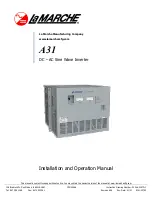
81
Playing Video on a Web Page
In general, there are two ways of playing video on a web page:
•
Using a web-browser plugin
or
•
Using the HTML5
<VIDEO>
tag, for browsers that support it
Unfortunately, the HTML5 standard did not actually specify what type of audio/video encoding
and container was to be supported. Therefore, even though the current versions of all major
browsers support the
<VIDEO>
tag, there is no single format that will work on all browsers.
Moreover, since the BBG-1090-TRX-MPEG is a transcoder designed primarily for the broadcast
market, it uses the transport stream container, which is not supported natively by any browser
4
.
Therefore, it is not possible to use the HTML5
<VIDEO>
tag with content generated by the
BBG-1090-TRX-MPEG.
In order to play the bitstream coming from the BBG-1090-TRX-MPEG in a web page, a plugin
with the appropriate audio, video and container support must be installed in the web browser.
The Open-Source VideoLAN player includes appropriate plugins that will work with the
bitstream coming from the BBG-1090-TRX-MPEG. The VideoLAN player can be downloaded
from:
http://www.videolan.org/vlc/
There are two types of plugins:
•
ActiveX controls, used by Internet Explorer
•
“Mozilla” (Netscape) style plugins, used by most other browsers (Firefox, Chrome,
Safari)
When installing the VideoLAN player, make sure to select the appropriate plugins for the
browsers you intend to use. The figure below indicates the choices to be made during the
VideoLAN installation in order to get the plugins installed on a Windows PC. If multiple
browser support is required, both types of plugins can be selected (but at least one “Mozilla-
style” browser must be already installed).
We recommend VideoLAN version 2.0.1 or later. Earlier versions had stability problems with
the Mozilla plugin and did not support HTTP Live Streaming.
4
A number of browsers support the MP4 container format, but this container does not support real-time encoded
video.
Содержание BBG-1090-TRX-MPEG
Страница 18: ...18...





































